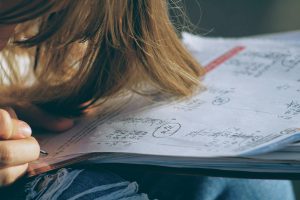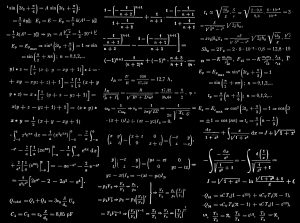Enhancing Learning with Abacus through Visual, Auditory, and Sensory Techniques

Do numbers seem like an abstract concept that your child finds difficult to grasp? If so, you are not alone. Many children face challenges when it comes to understanding and applying mathematical concepts. But what if there was a way to make learning mathematics easier and more enjoyable? That’s where abacus training comes in.
Abacus training utilizes visual, auditory, and sensory techniques to enhance mathematical skills. By engaging multiple senses, children develop a deeper understanding of numbers and arithmetic operations. In this article, we will explore the power of visual learning, auditory learning, and sensory learning in enhancing mathematical learning with the abacus. Let’s dive in!
Visual Techniques: Seeing Mathematics in Action
One of the key advantages of using an abacus as a learning tool is its ability to provide a clear visual representation of numerical values. Each bead on the abacus represents a specific quantity, allowing learners to see the physical movement of beads as they perform calculations. This visual representation helps children grasp abstract concepts by making them tangible and concrete.
To further enhance visual learning, color-coding can be employed. Assigning different colors to beads or groups of beads helps students visually differentiate between numbers. This aids in recognition and memory retention by making it easier to associate specific quantities with their corresponding colors.
Pictorial aids can also play a significant role in visual learning. By incorporating images or diagrams that correspond with the numbers on the abacus, children can reinforce counting and addition concepts visually. For example, using pictures of objects that match the number of beads can help children visualize the mathematical operations they are performing.
Auditory Techniques: Listening and Learning
In addition to visual techniques, auditory learning is a powerful tool in abacus training. Encouraging students to count aloud as they manipulate the beads helps solidify their understanding of numbers. Verbalizing the counting process engages their auditory senses and reinforces their learning through sound.
Music can also be incorporated into abacus training to enhance auditory processing. Rhythmic counting or songs involving numbers create a fun learning environment that stimulates the auditory senses. Research has shown that incorporating music into learning activities improves memory retention and enhances overall engagement.
Another effective auditory technique is the use of cues. By implementing auditory signals such as clapping or tapping, educators can mark the completion of a counting sequence or calculation. These cues provide students with auditory reinforcement, helping them associate sound with mathematical operations.
Sensory Techniques: Engaging Hands-On Learning
Abacus training offers a unique opportunity for tactile engagement, which is especially beneficial for kinesthetic learners. The physical act of moving beads on the abacus engages the sense of touch and helps develop fine motor skills. This hands-on experience allows children to reinforce their learning through movement.
Multi-sensory learning, which combines visual, auditory, and tactile approaches, creates a holistic learning experience. While moving the beads, children can simultaneously say the numbers aloud and visualize them in their minds. This multi-sensory approach engages multiple senses and enhances memory, concentration, and problem-solving skills.
Physical movement can also be incorporated into abacus training to enhance engagement. Allowing children to stand or move while learning helps maintain their focus and prevents them from getting restless or bored. Simple gestures or movements that correspond with counting or mathematical operations can further reinforce learning through physical involvement.
Unlocking Mathematical Potential with Abacus Training
Integrating visual, auditory, and sensory techniques in abacus training offers a multitude of benefits for children’s mathematical learning. By engaging multiple senses, abacus training enhances memory, concentration, and problem-solving skills. It makes mathematics more accessible and enjoyable, catering to different learning styles.
Through visual techniques such as the physical representation of numbers, color-coding, and pictorial aids, children develop a deeper understanding of numerical concepts. Auditory techniques, including counting aloud and incorporating music, improve listening skills and reinforce learning through sound. Sensory techniques such as tactile engagement and multi-sensory learning enhance fine motor skills and overall cognitive development.
If you’re looking to enhance your child’s mathematical abilities, consider exploring the world of abacus training. Companies like SIP Abacus offer world-class skill development programs tailored to children’s needs. Their structured curriculum, small class sizes, and interactive teaching methods provide an ideal environment for children to thrive in their mathematical journey.
Studies have shown that children who complete abacus training programs like those offered by SIP Abacus perform significantly better in math and reading at school. These programs develop strong mental math abilities, improve focus and concentration, enhance overall intelligence and academic performance, boost confidence and self-esteem, and provide a competitive edge over peers.
Unlock your child’s mathematical potential today through abacus training. Embrace the power of visual, auditory, and sensory techniques to make learning mathematics an enjoyable adventure. With the right tools and guidance, your child can excel in mathematics and develop essential skills that will benefit them throughout their lives.



